Order Pterioida Higher classification Pinna | Scientific name Pinna nobilis Rank Species | |
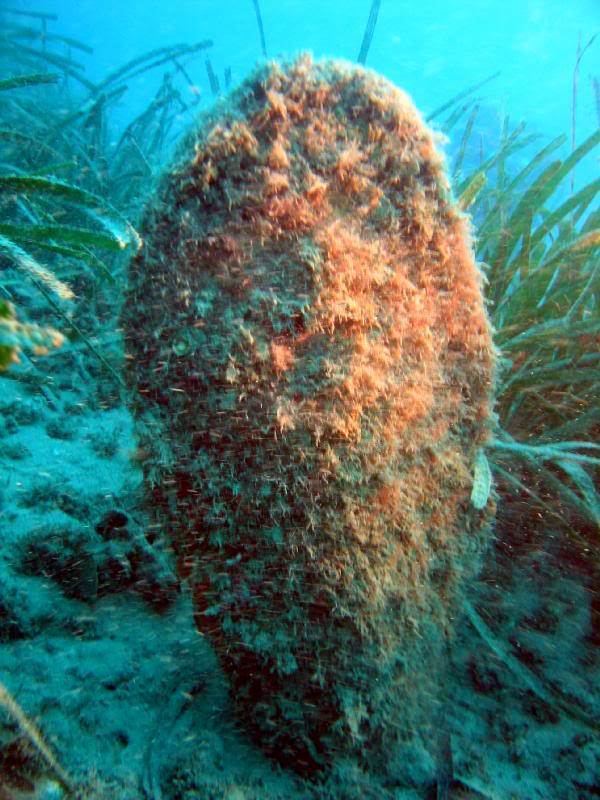 | ||
Similar Pinna, Bivalvia, Molluscs, Pinnidae, Posidonia oceanica | ||
Studying pinna nobilis populations
Pinna nobilis, common name the noble pen shell or fan mussel, is a large species of Mediterranean clam, a marine bivalve mollusc in the family Pinnidae, the pen shells. It reaches up to 120 cm (4 ft) of shell length.
Contents
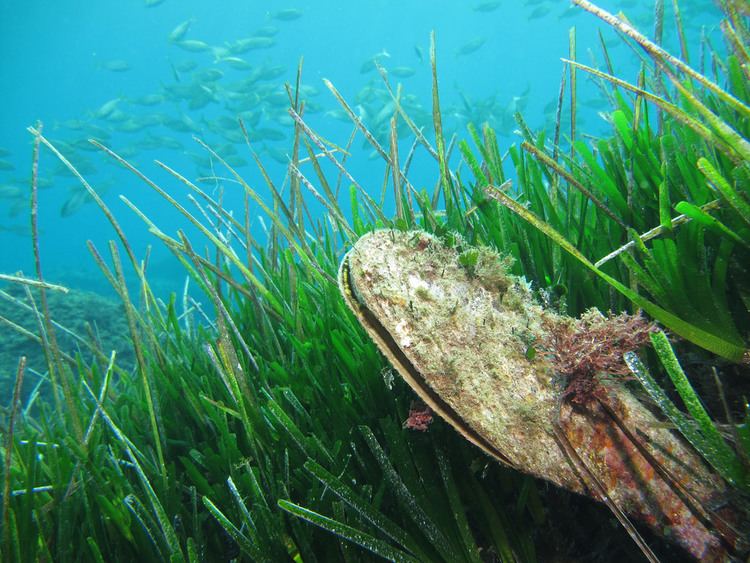
Pinna nobilis
Description
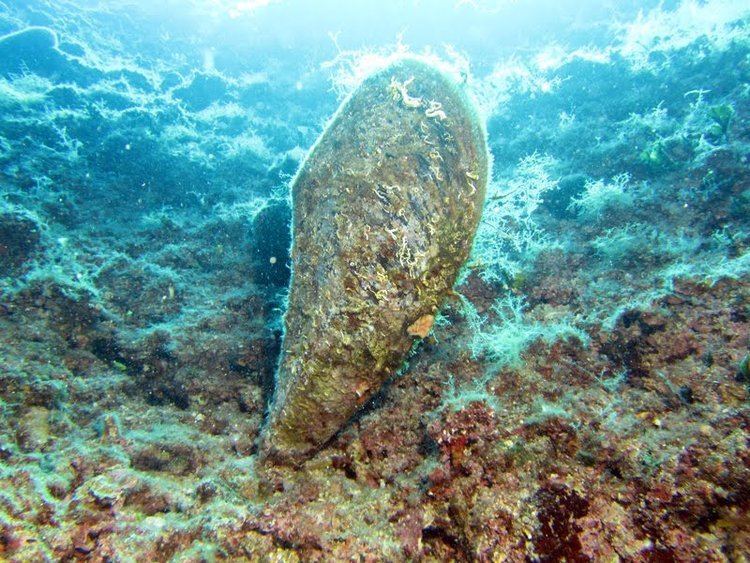
The bivalve shell is usually 30–50 cm (1.0–1.6 ft) long, but can reach 120 cm (4 ft). Its shape differs depending on the region it inhabits. Like all pen shells, it is relatively fragile to pollution and shell damage. It attaches itself to rocks using a strong byssus composed of many silk-like threads which used to be made into cloth. These keratin fibres that the animal secretes by its byssus gland are even 6 cm (2.4 in) long. The inside of the shell is lined with brilliant mother-of-pearl.
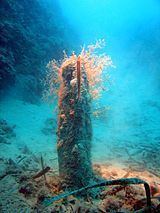
There is a symbiotic relation between the Pinna Nobilis and a little crayfish often found living inside the shell. The little crayfish pinches the mussel when spotting danger. When pinched the mussel closes its shell. The crayfish is 3-7cm long and totally transparent.
Distribution
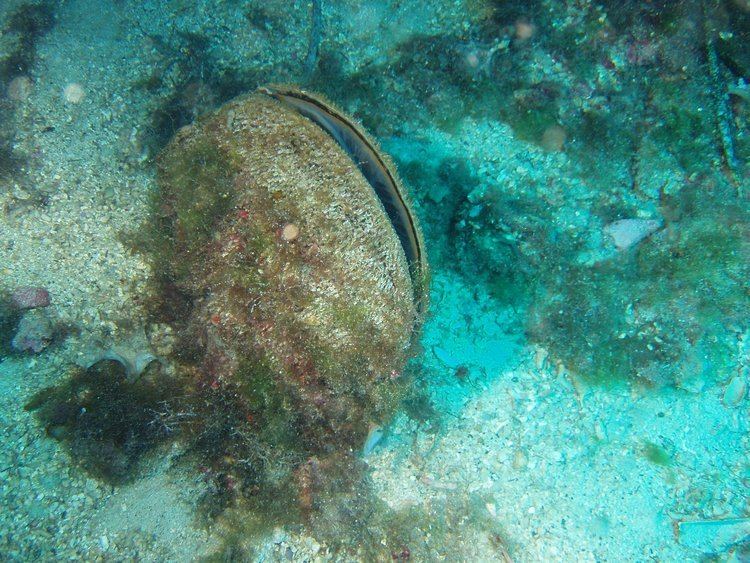
This species is endemic to the Mediterranean Sea, where it lives offshore at depths ranging between 0.5 and 60 m (1.6 and 196.9 ft). It could be found buried beneath soft-sediment areas (fine sand, mud, often anoxic).
Human relevance
This species is the origin of sea silk, which was made from the byssus of the animal.

In recent years, Pinna nobilis has become threatened with extinction, due in part to fishing, incidental killing by trawling and anchoring, and the decline in seagrass fields; pollution kills eggs, larvae, and adult mussels. The noble pen shell has been listed as an endangered species in the Mediterranean Sea. The European Council Habitats Directive 92/43/EEC, on conservation of natural habitats and the wild fauna and flora, proclaims that P. nobilis is strictly protected (by the Annex IV of EEC, 1992)- all forms of deliberate capture or killing of fan mussel specimens are prohibited by law.
As part of the Costa Concordia disaster recovery effort going on in Italy (2012), a group of about 200 Pinna nobilis was manually relocated to a nearby area due to the threat posed by subsequent engineering work.
